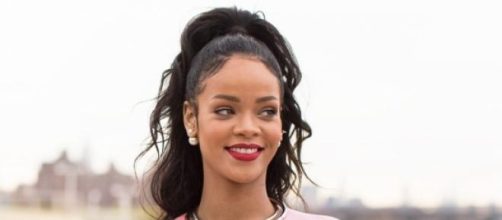For years, Dior has come up against criticism for its less than colourful cast on the runway. It's taken Raf Simmons, Dior's creative director, seven seasons to act on it; but Dior have hit back by using 'Fashion Icon of The Year' Rihanna, to silence the critics. This move makes Rihanna the first black woman to be appointed the face of the brand when she features in the 'Secret Garden' campaign this spring.
Rihanna joins an elite group of 'white' celebrity women that have put their name and face to the luxury French fashion label. The relevance of this move by Dior is never more prevalent than in Rihanna's quote, "It's such a big deal for me, for my culture, for a lot young girls of colour."
It is somewhat startling that, sixty six years on from Dorethea Towles being discovered in Paris by Dior, colour is still an issue within the fashion world.
When looking back at the history of fashion, it would seem that the black model makes far slower progress that their white counterpart. Each decade seems to only produce one black beauty and their rise to the top a struggle. In the 1950's, Sammy Davis Jr discovered Helen Williams, but she was considered too black for America so made a move to Paris were Dior gave her the big break she needed. When she returned to the USA this breakthrough helped her to push aside the 'light skinned' models and become a 'pivotal' moment in the progression of black modelling. It wasn't until the 60's that the first black 'super model' was recognised. Donyale Luna broke through the apartheid system to become the first African American woman to appear on the cover of Vogue.
With the strides that had been made by her predecessors, Pat Evans dared the fashion world further in the 1970's with her shaved head. Turned down by the specialist black modelling agencies, Evans signed to a white women's agency that represented British super model Twiggy, the only model on their books being paid more than Evans. Starting at age 15, British model Naomi Campbell was one of six models of the 80's and 90's to be branded a super model. Campbell, along with white models Christy Turlington and Linda Evangelista, formed a trio called the 'trinity' and were the most in demand models of their generation.
It was these friends who challenged Dolce and Gabbana to 'use Naomi, or don't get us.' In 1987 Campbell became the first black model to appear on the cover of British Vogue since 1966.
Sports Illustrated Swimsuit and Victoria Secrets Angel Tyra Banks was one of the modelling world's top earners of the 2000's. Tyra moved to TV creating her own modelling show, Americas Next Top Model, which has seen black winners. Time magazine continues to list Banks as one of four most influential African American women. These women have all got to the top of their game, but it has never been done with the same ease as the white models around them. To be a black cover girl or to be black and front a campaign is difficult to achieve and becomes aspiring to the girls that want to follow in their footsteps.
Rihanna has an incredibly successful music career and is a style icon without fronting campaigns and Dior knows this. But it just doesn't feel right that there should be this one every decade ratio of black super models. Fashion seems to have muted its colour spectrum to different shade of white.

